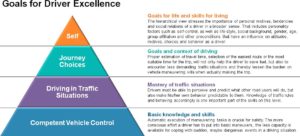
By Art Liggio, President and CEO, Driving Dynamics
Fleet operators are perplexed. In the past few years sizable investments have been made in equipping vehicles with the newest safety technologies, implementing telematics, perhaps trying predictive analytics, increasing the frequency of MVR runs and adding other types of technology sophisticated, magic-button solutions. However, crash rates and traffic fatalities are increasing.
Consider this. The latest estimate is that last year traffic crashes cost employers approximately $67 billion. Five years ago this amount was nearly $57 billion [Note: on-the-job crashes represent about 44 percent of these costs]. That is a $10 billion swing in the past five years. It is the same five years during which fleet operators began taking advantage of all the available safety technologies.
With the extra dollars invested in these technological advancements, shouldn’t the numbers be improving for fleet operators who have done an impressive job focusing on safety using these resources? In many individual cases, numbers are improving however, overall, fleet operators continue to be challenged with poorer than anticipated results. Why is that?
There is no one specific answer. Traffic safety professionals can identify a number of factors which contribute to this troubling trend but a key factor, which ironically is seldom mentioned, is that fleet operators are hiring essentially unskilled workers. These individuals may be highly adept in their field, whether it’s as a service technicians or sales person, etc., however, when it comes to safely and skillfully operating a vehicle, most candidates are woefully under qualified.
Under qualified? Yes. Over the years training standards to obtain a driver’s license have eroded. At public schools, funding has been an issue and in too many cases, driver’s education has been dropped from school programs. Fewer people are receiving any professional training whatsoever to obtain a license. John Ulczycki, former National Safety Council VP of strategic initiatives, while discussing this very topic stated, “There are more kids on the road without even the basic education and skills that kids used to get”.
Exacerbating this dilemma further, the national average for the hands-on portion of driver’s education is now only six hours. There are even some states that have no minimum time requirements. Peter Kissinger, president and chief executive of the AAA Foundation for Traffic Safety, said that cutbacks have spawned “faster, cheaper, but not necessarily better programs.” Online programs, which are available in 15 States, he said, “are virtually unregulated”.
To be fair, most driver education courses actually do cover at least some of the psychomotor, perceptual, and cognitive skills which are fundamental to collision avoidance. The problem is that they are usually covered in a relatively superficial manner, owing to the scope of topics being presented and the limited time frame available.
So, who really trained that applicant you will be entrusting to safety operate your company vehicle? And, did that instruction actually include a focus on safe driving practices or was the time spent learning how to successfully parallel park? After those initial, if that, six hours, who followed up with the newly licensed driver to make sure that this novice operator continued learning and practicing solid defensive driving techniques and habits? Did he or she actually learn any to begin with? Or once receiving a license, was your applicant’s continued learning really just a form of self-taught trial and error? What poor habits were unwittingly hardwired over the years which he or she is now bringing to your fleet?
Driving Dynamics applies the following hierarchy of traits and attributes in evaluating a driver to be considered competent in all aspects of their driving responsibilities. (Click to enlarge)
Do your drivers actually have this competency level? If you are relying on whatever form of driver’s education training in which they may have participated, then the investment you have made in safety technology is resting on a weak foundation and your organization will be at a disadvantage to achieve its safety goals. As fleet operators continue to leverage many of the latest mechanical and digital technologies consider the most effective and sophisticated vehicle upgrade is installing a highly skilled and self-aware operator behind the wheel.
For more information on the topic view: selecting safer drivers for your business, an article from Travelers insurance.
Safety & Risk is presented by Driving Dynamics an accomplished provider of impactful driver safety training and risk management services. Continually building and delivering programs based on sound research, proven learning methodologies and expert instruction, we are dedicated to improving drivers’ abilities to stay safe by leveraging risk management tools, principle-based learning and applied techniques. The One Second Advantage safety training principle developed by Driving Dynamics is rooted in research that shows 90 percent of all traffic crashes can be avoided when the driver has just one more second to react and knows what to do with that additional second. Driving Dynamics encourages all drivers to Steer Toward Safety
safety training principle developed by Driving Dynamics is rooted in research that shows 90 percent of all traffic crashes can be avoided when the driver has just one more second to react and knows what to do with that additional second. Driving Dynamics encourages all drivers to Steer Toward Safety
Website: www.drivingdynamics.com; Blog: https://ift.tt/2t4N01x
Steer Toward Safety and The One Second Advantage are trademarks of Driving Dynamics Inc. All Rights Reserved.
The post Install the Hottest Vehicle Safety Tech―Upgrade to a Skilled Driver appeared first on Fleet Management Weekly.
from Fleet Management Weekly https://ift.tt/2uF2Yzb



Sourced by Quik DMV - CADMV fleet registration services. Renew your registration online in only 10 minutes. No DMV visits, no lines, no phone mazes, and no appointments needed. Visit Quik, Click, Pay & Print your registration from home or any local print shop.






0 comments:
Post a Comment